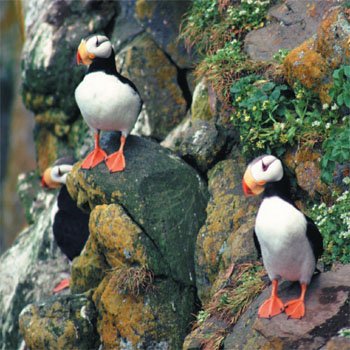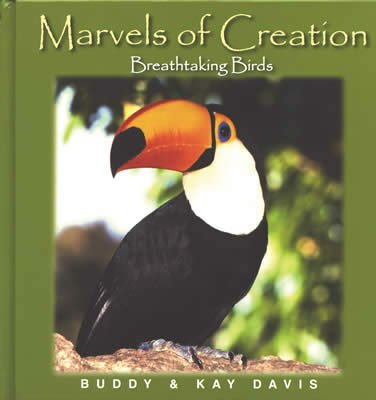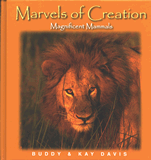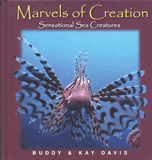Atlantic Puffin
Excerpt from Marvels of Creation: Breathtaking Birds
by Buddy Davis and Kay Davis on December 7, 2012The puffin, also known as the sea parrot, is a popular and easily recognized sea bird.

The puffin, also known as the sea parrot, is a popular and easily recognized sea bird. This species makes its home in the North Atlantic and Arctic Oceans. It rarely comes to shore except when it is time to lay its eggs.
The puffin has a very colorful large beak during the breeding season. The bill has red, yellow, and blue stripes with yellow skin in the corner of the mouth. After the breeding season, the colors are shed leaving the bill smaller and gray in color. The feathers of the puffin are black on the upper part of the body and white underneath with the black continuing under the neck like a collar. The puffin has a small colored patch above and below its eyes as well. The puffin has an oil gland located near its tail. It applies this oil to its feathers to keep them waterproof.
Its wings enable the puffin to swim at great depths hunting for food. The inside of the beak has backward-pointing spikes to help hold its food. The favorite food of the puffin is the sand eel, but it also catches small fish, mollusks, and other plankton animals.
Puffins usually pair for life although they don’t stay together all of the time. They congregate in large colonies during the breeding season, which lasts from March through April. When it’s time to build a nest, both the male and female go on shore and start digging burrows or cleaning out old ones. They even use abandoned rabbit burrows. A single egg is laid at the end of a six-foot long (1.8 m) tunnel and is incubated by both parents. The egg will hatch in 40 to 43 days. Both parents will feed the new hatchling until it is six weeks old. The chick will then leave the burrow and find its way to the sea at night to lessen the danger of being eaten by predators. Although it cannot fly at this time, it is a good swimmer and will dive if a threat of danger appears. The young chick will return to the colony the following year but will not breed until it is 4 to 5 years old.
The predators of the puffin include all the large sea birds such as gulls. At one time, man hunted the puffin for food and used its feathers for decoration.
Atlantic Puffin
Charadriiformes • Alcidae • Fratercula arctica
Weight: 12–17 ounces (490.5
gr)
Length: 12 inches (30 cm)
Special Design Feature: The puffin has backward
pointing spikes inside the beak to help hold its food.
Did you know? Puffins
live in the cold arctic waters and they rarely come on land except to lay their
eggs.
Marvels of Creation: Breathtaking Birds
This spectacular book brings the world of feathered creatures alive in a unique and colorful way.
Browse Kids BookRecommended Resources
- © 2024 Answers in Genesis
- Privacy Policy
- Contact
- About




